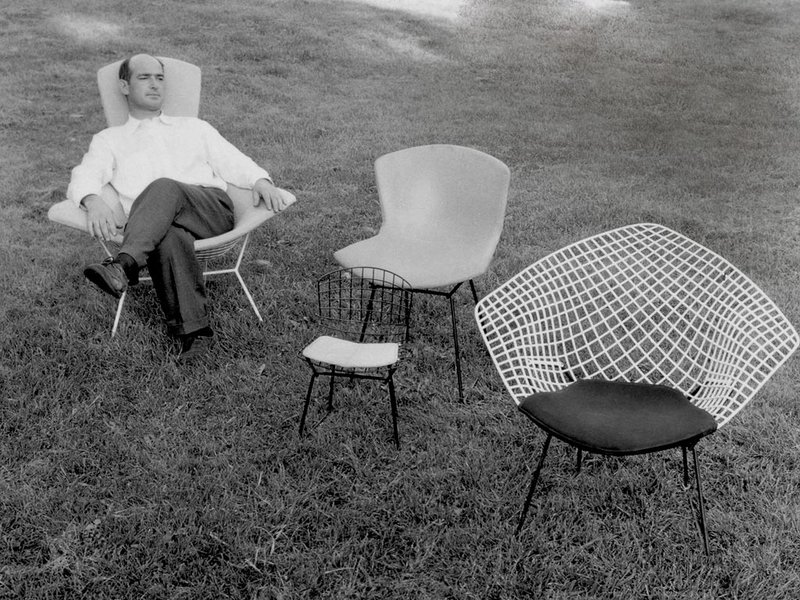Aucun produit disponible pour le moment
Restez à l'écoute ! D'autres produits seront affichés ici au fur et à mesure qu'ils seront ajoutés.
Sculptor and furniture designer Harry Bertoia was born in San Lorenzo, Italy in 1915. He settled in the United States in 1930, and went on to study at the Society of Arts and Crafts in Detroit, Michigan (1936) and the Cranbrook Academy of Art in nearby Bloomfield Hills, Michigan (1937-1939). At the latter, he encountered Walter Gropius, Edmund N. Bacon, and Charles and Ray Eames; he also taught metalworking and jewelry design (1937-1942) and graphics (1943) at the school.
In 1943, Bertoia moved to California to work with Charles and Ray Eames for the Evans Product Company. While there, he also took welding classes at Santa Monica City College, and began to create his first welded sculptures. In 1950, at the invitation of Florence Knoll, he re-settled in Bally, Pennsylvania, where he opened his own furniture and sculpture studio. His furniture designs from this period incorporated welded and molded wire, and included several pieces for the furniture manufacturer Knoll International. The most famous, the Diamond chair (1952-53), featured an organically shaped diamond-like shell seat made of chromium-plated steel wire; it was designed to be viewed from all sides, like a sculpture. Knoll marketed multiple versions of this chair, and the royalties Bertoia received as a result allowed him to devote himself primarily to his sculpture.
In 1953, the first of his many large sculptures—characterized by bold, organic forms and textured details—were commissioned for Eero Saarinen’s General Motors Technical Center in Warren, Michigan. Later commissions include a 1963 bronze mural at the Dulles International Airport in Virginia and a 1967 fountain at Philadelphia’s Civic Center. In 1960, Bertoia began to concentrate on creating sound sculptures. Known collectively as Sonambient, most consist of bunches of vertically mounted metal rods that create a range of sounds when they strike one another.
The designer has been quoted as saying, “In sculpture I am primarily interested in the relationship between form and space and the characteristics of the metal. In chairs many functional problems have to be solved first . . . but basically chairs are also studies in space, form and metal. On close inspection it becomes clear that they are mostly made up of air. Space flows right through them.”
Bertoia’s numerous awards include a Gold Medal from the Architectural League of New York (1955–56), the Fine Arts Medal from the Pennsylvania Association of the American Institute of Architects (1963), and an honorary doctorate from Lehigh University in Bethlehem, Pennsylvania (1976). His work is included in several collections, including those of the Walker Art Center in Minneapolis, the Brooklyn Museum, the Detroit Institute of Arts, the Cleveland Museum of Art, the Kemper Museum of Contemporary Art in Kansas City, and the Smithsonian American Art Museum in Washington, DC, among others.
Bertoia passed away in 1978 in Barto, Pennsylvania.

Restez à l'écoute ! D'autres produits seront affichés ici au fur et à mesure qu'ils seront ajoutés.